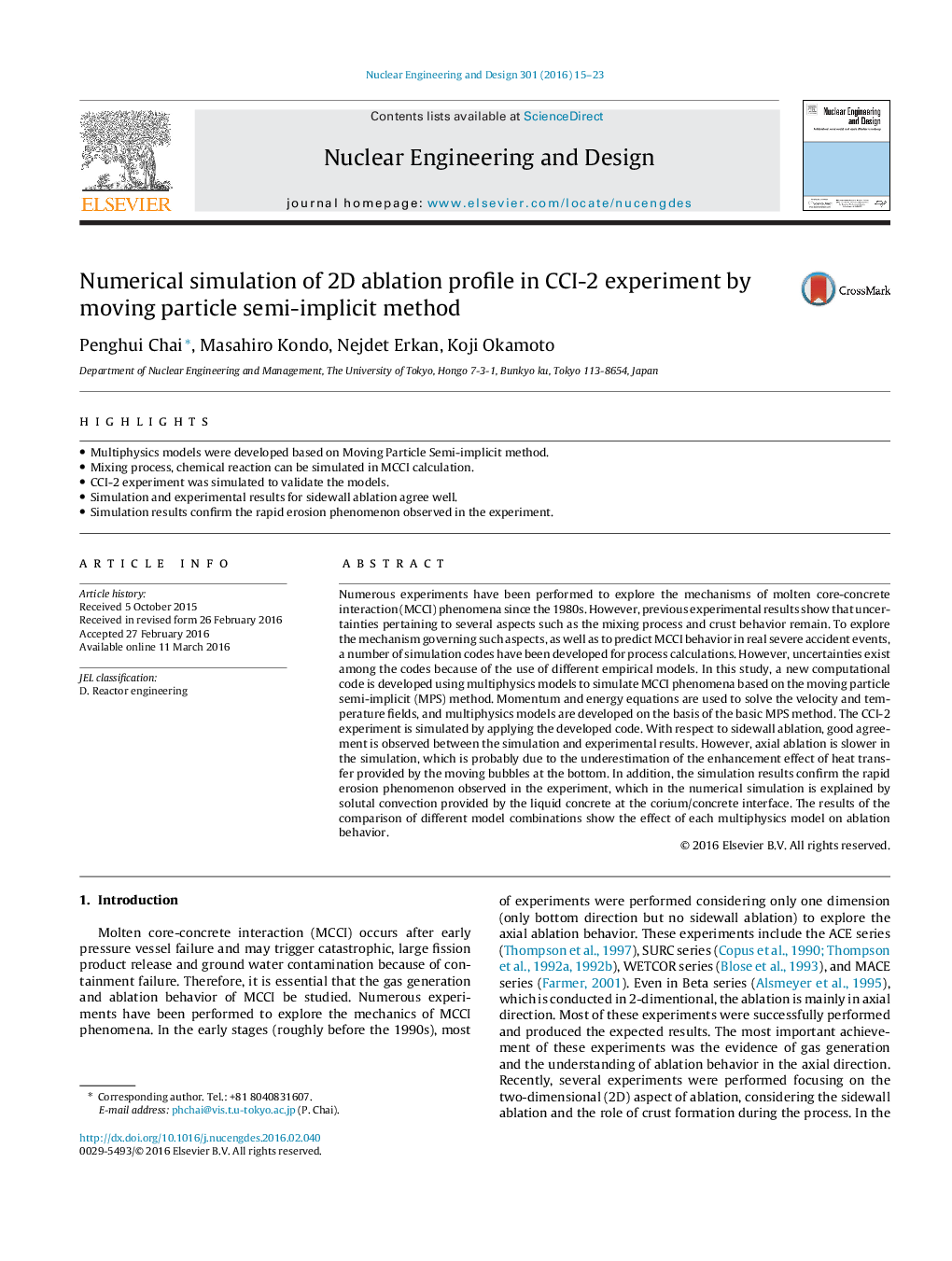| Article ID | Journal | Published Year | Pages | File Type |
|---|---|---|---|---|
| 295947 | Nuclear Engineering and Design | 2016 | 9 Pages |
Abstract
Numerous experiments have been performed to explore the mechanisms of molten core-concrete interaction (MCCI) phenomena since the 1980s. However, previous experimental results show that uncertainties pertaining to several aspects such as the mixing process and crust behavior remain. To explore the mechanism governing such aspects, as well as to predict MCCI behavior in real severe accident events, a number of simulation codes have been developed for process calculations. However, uncertainties exist among the codes because of the use of different empirical models. In this study, a new computational code is developed using multiphysics models to simulate MCCI phenomena based on the moving particle semi-implicit (MPS) method. Momentum and energy equations are used to solve the velocity and temperature fields, and multiphysics models are developed on the basis of the basic MPS method. The CCI-2 experiment is simulated by applying the developed code. With respect to sidewall ablation, good agreement is observed between the simulation and experimental results. However, axial ablation is slower in the simulation, which is probably due to the underestimation of the enhancement effect of heat transfer provided by the moving bubbles at the bottom. In addition, the simulation results confirm the rapid erosion phenomenon observed in the experiment, which in the numerical simulation is explained by solutal convection provided by the liquid concrete at the corium/concrete interface. The results of the comparison of different model combinations show the effect of each multiphysics model on ablation behavior.
Related Topics
Physical Sciences and Engineering
Energy
Energy Engineering and Power Technology
Authors
Penghui Chai, Masahiro Kondo, Nejdet Erkan, Koji Okamoto,
